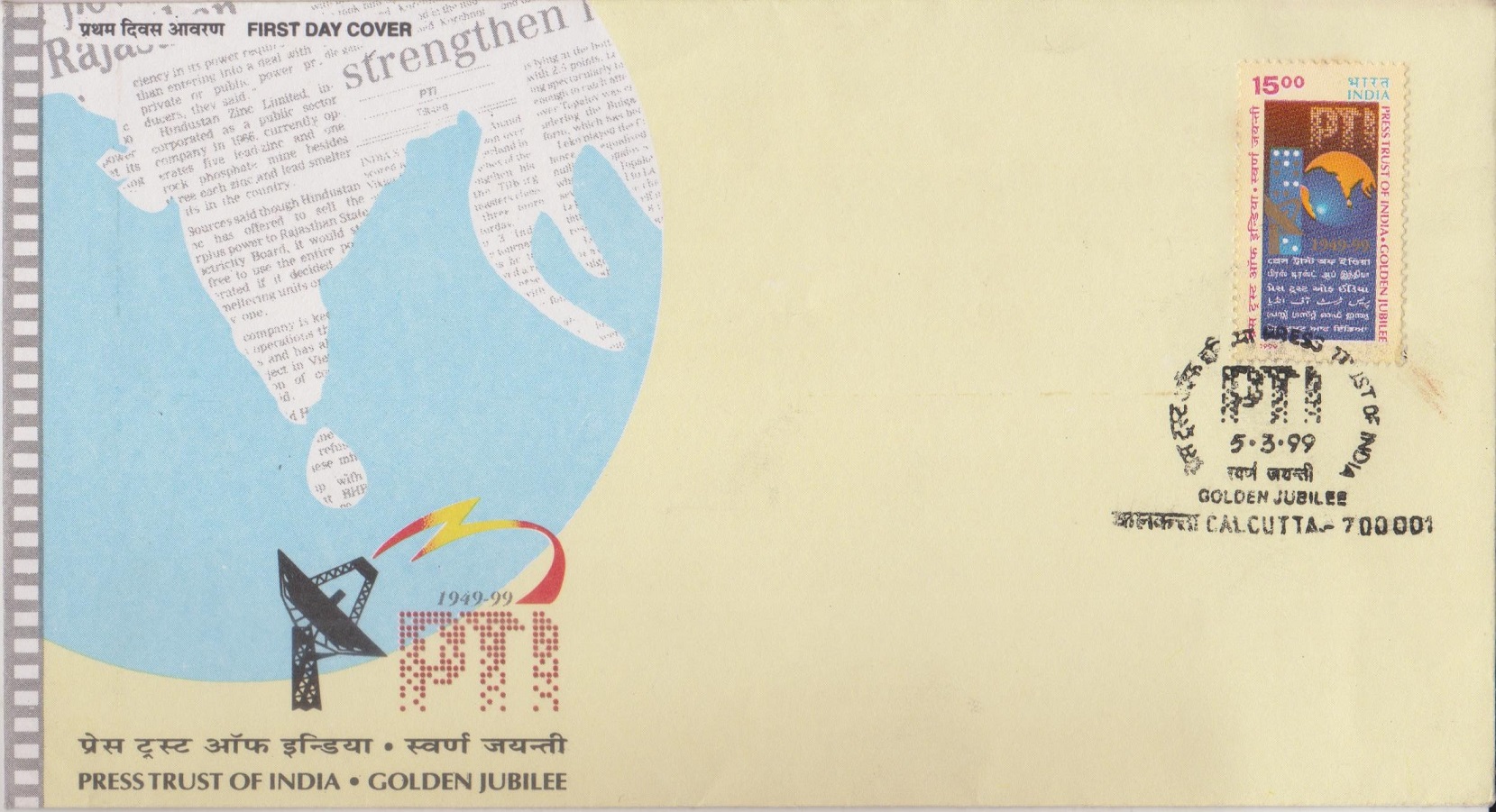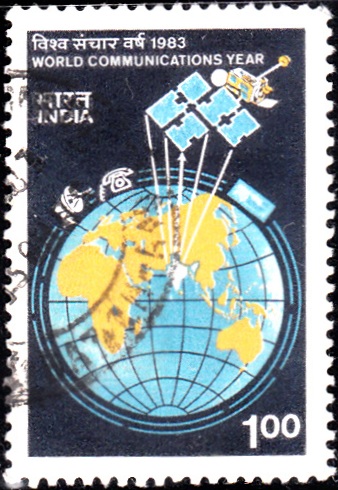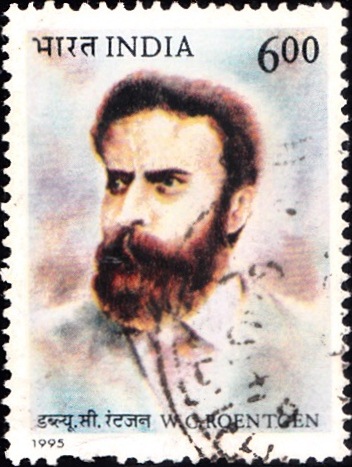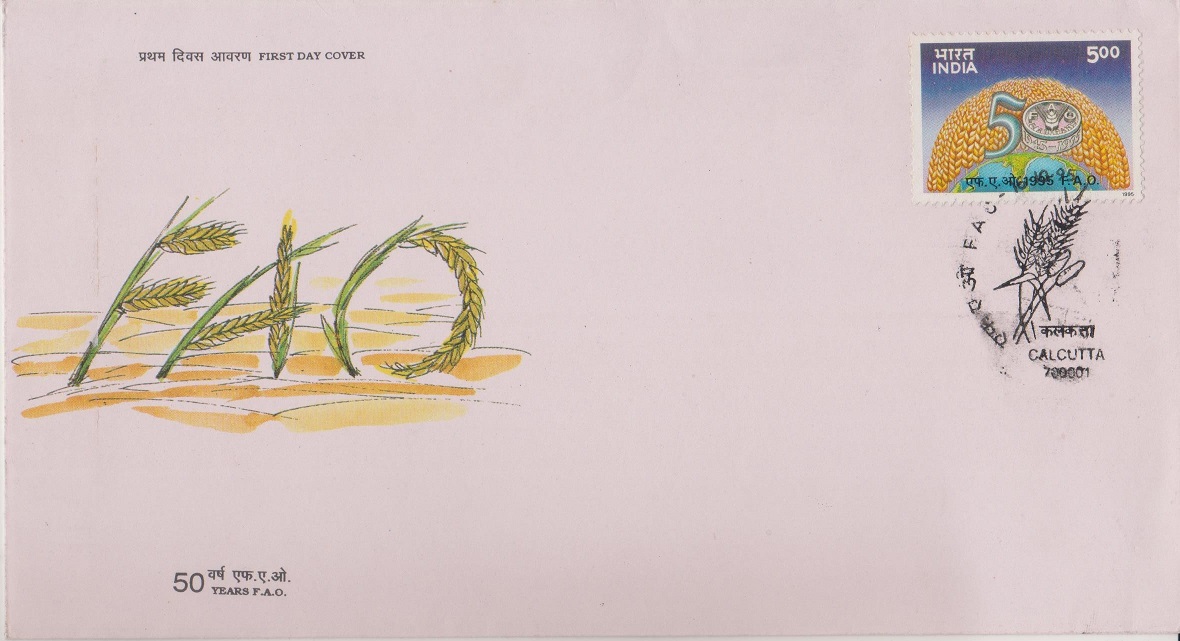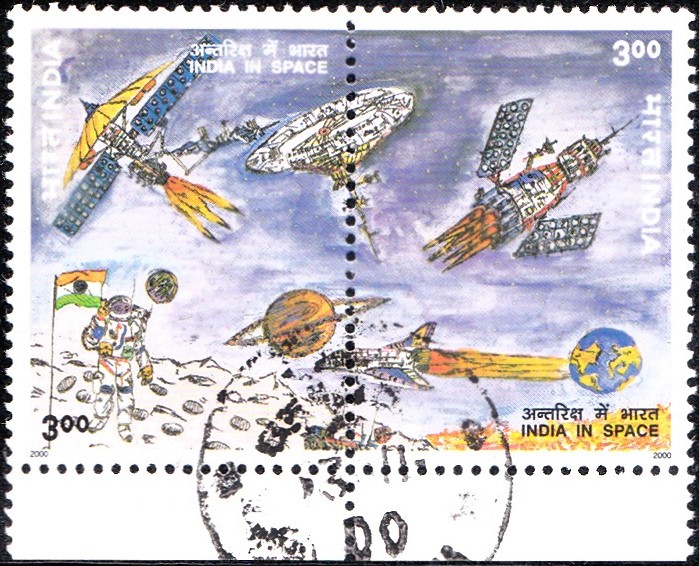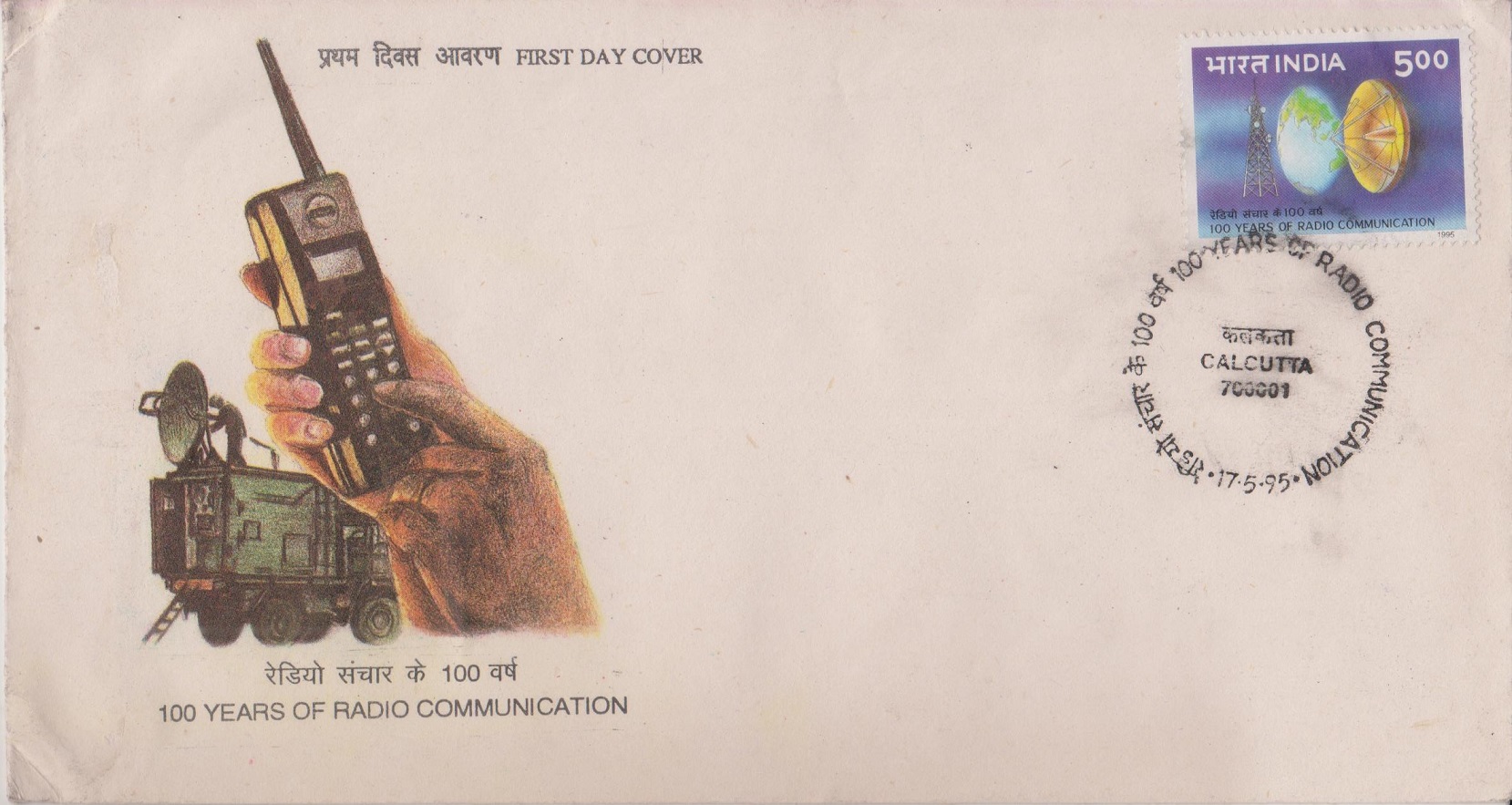
100 Years of Radiocommunication
A commemorative postage stamp on the Centenary of Radio–communication :
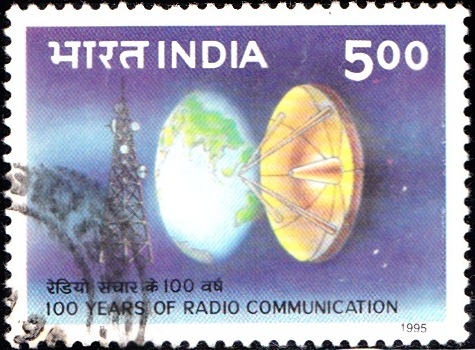
 Issued by India
Issued by India
Issued on May 17, 1995
Issued for : The Department of Post is privileged to issue a postage stamp to commemorate the 100 years of Radiocommunication.
Credits :
Stamp & FDC design : Shri Suresh Kumar
Cancellation : Smt. Alka Sharma
Type : Stamp, Postal Used
Colour : Multi Colour
Denomination : 500 Paise
Overall size : 2.90 x 3.91 cms.
Printing size : 2.55 x 3.55 cms.
Perforation : 13.5 x 13.5
Paper : Matt Chromo Indigenous
Number of stamps Printed : 1 Million
Number per issue sheet : 35
Printing Process : Photo Offset
Printer : Calcutta Security Printers, Kanpur
About :
- Radiocommunication, which had its origin 100 years ago, has become a unique and indispensable element of all telecommunications, a resource for commerce, transportation, science and culture. Innovation in radio has been of crucial importance in the telecommunication revolution of today and what was considered at the outset to be essential mainly for safety at sea and for communication where land facilities could not help is, in the modern era, present in a variety of direct and indirect applications.
- The most significant steps towards the discovery of Radiocommunication were taken a century ago when Prof. Oliver Lodge of Great Britain demonstrated transmission over some distance, Marconi demonstrated signalling in Italy and Popov independently applied similar apparatus to demonstrate reception from electrical storms.
- Wireless first proved its value to mankind on 23 January 1900 when a small group of fishermen near the island of Hagland in the Baltic Sea was served by a radio call to the icebreaker Yermak. Marconi had just flashed the letter ‘s’, three dots in Morse Code, from Cornwall to Newfoundland a distance of 3500 kilometers.
- In India, wireless telegraphy was first introduced between Sagar Island and Sandbeads in Diamond Harbour near Calcutta in 1902. In 1903, a link between Elephant Point and Amerst near Bombay was installed and in the year 1904 a link was established between Diamond Island and Port Blair.
- Technological advances over the years in the field of Radiocommunication are manifest in the progress from vacuum tubes to transistors and integrated circuits, from analogue to digital techniques, from terrestrial to satellite-based communications and from point-to-point fixed wireless networks to handheld global networks.
- New technologies are being constantly developed to share radio frequency spectrum and geostationary satellite orbit, two limited natural resources, so that all the Radiocommunication networks the world over may function in an interference-free environment. In fact, global radio regulations have been designed to ensure equitable access to the radio frequency spectrum, freedom from harmful interference, standardisation of radio systems etc. under the aegis of the International Telecommunication Union, Geneva.
- Today, Radiocommunication in one form or the other is used in all walks of life such as in sound and television broadcasting, satellite communication, microwave systems, communication systems for aircrafts and ships, amateur radio, radio astronomy, public telecommunication networks in urban and rural areas, remote control devices, space research, cellular phones, radio paging etc.
- Text : Wireless Planning & Co-ordination Wing, Ministry of Communications.
Subscribe
Login
0 Comments


